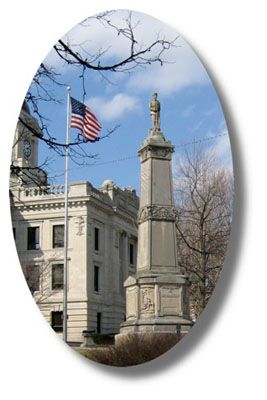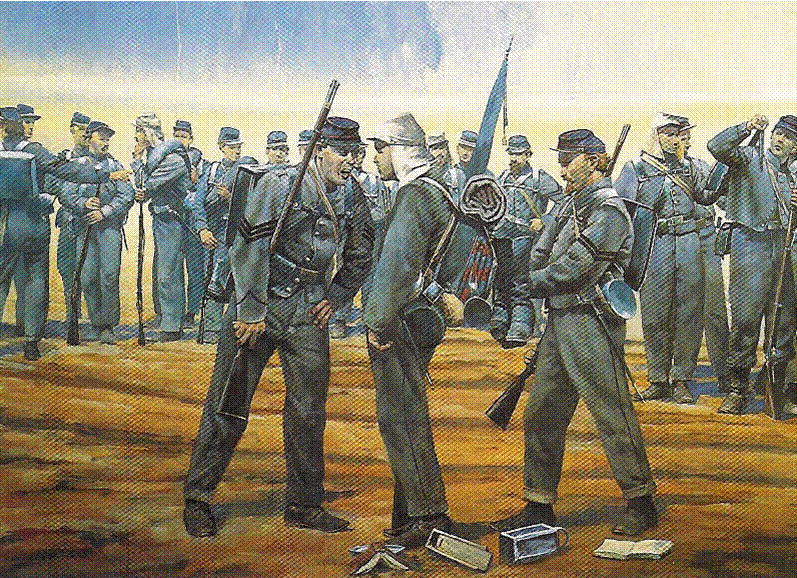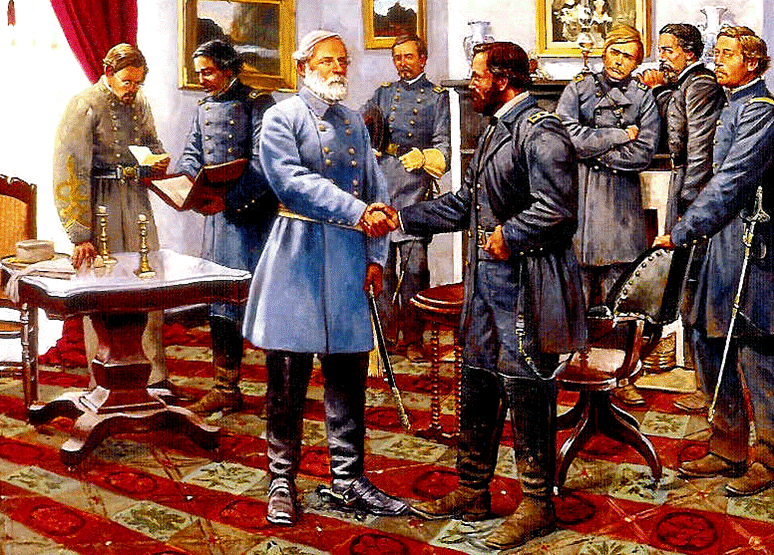Monroe County
Pamplin Historic Park, Petersburg, VA. By Jim Stark A few years ago, I took a three-week motorcycling, camping trip southeast, visiting the Civil War battlefields of Shiloh, Stones River, Chickamuga, and Petersburg. The highlight of the trip was my visit to the Pamplin Historical Park in Petersburg. It was appropriate that I wrapped up my Civil War tour in Petersburg. I had started at Shiloh, one of the early engagements of the war and Petersburg was one of the last. The breakthrough battle at Petersburg on April 2, 1865 was followed by Lee’s surrender at Appomattox just five days later. Pamplin Historical Park is the site of the watershed battle that led to the Confederate’s loss of Richmond and Lee’s capitulation. Robert Boisseau Pamplin, Jr., the former President of Georgia Pacific, and his father, bought this historical property in the early 1990s. Their non-profit foundation spent $30 million developing it into what is considered America’s premier Civil War History attraction. It was certainly the most impressive site I visited on my trip. The grounds include The National Museum of the Civil War Soldier, Tudor Hall Plantation, Battlefield Center, Military Encampment and the Breakthrough Battlefield Trail. The National Museum is dedicated to the common soldier of the Civil War, both North and South, and is a most unique facility. When you enter, you are asked to choose a guide from pictures and brief descriptions of 13 soldiers; some are Yankees, others Confederates, some are enlisted, and others are officers. I chose Lt Woodcock serving with the Pennsylvania Volunteers. You are then given an audio cassette player to listen to. As you enter the various rooms and displays, the tape player automatically turns on, triggered by that display and your soldier, explains his activities relating to the display before you. Sections of the museum dealt with six different periods; camp life before battle, being on the march, trail by fire, death on the battlefield, surviving the field hospital, winter camp, and reenlistment. Each section has life sized dioramas set before backdrops painted with realistic murals. “Camp Life,” for example, had a painting of a campground in the background with actual tents and equipment in the foreground. Manikins of soldiers are huddled under makeshift Ramada playing cards. Over the headset can be heard an explanation of early camp life with its bad food, poor accommodations, boredom, grousing and training, training, and more training. Illness was another unfortunate result of living in such primitive conditions. Outbreaks of measles, chicken pox and dysentery infected thousands and many died from such illnesses. I was surprised to learn that two-thirds of Civil War deaths were caused by disease rather than wounds from battle.
“On the March,” detailed the equipment men carried as well as the logistics of moving weapons, ammunition and support supplies by wagon train. Lt. Woodcock described his thoughts as he moved forward toward the enemy. Would he be injured or killed? Would he run? Could he shoot a gun to kill another man? In the “Trial by Fire” display, the museum visitor walks through a tree-lined corridor with the enemy visible ahead pointing and firing rifles at him. Bullets buzz by his ears, cannon balls explode nearby and cries of anguish and pain are heard all around. The clamor increases in intensity as the visitor continues forward giving him a genuine feeling of danger and apocalypse. “Soldiers Fate” deals with death on the battlefield. It is very graphic. A Minié ball through the head would be a “clean” way to die. But most had limbs severed by cannon balls or bodies ripped apart by grape shot or canister. The dead were buried where they fell by comrades or the enemy whenever there was a break in the fighting. Decomposition started quickly and there was a need to bury the dead as quickly as possible. If the body could be identified, it might be sent home. There was no such thing as “dog tags”, so soldiers used to make their own, or just pin their name and address to various articles of clothing for identification in case of being killed. We have all seen the pictures of dead soldiers on Civil War battlefields. Did you ever notice that none were wearing shoes? They had been taken by others. Don’t think of that as grave robbing, but rather as sharing. Materials were in such short supply that finding a dead soldier with a good pair of shoes, or rifle, or haversack, or coat was an acceptable resource. A park ranger told me at the start of the war, only the North had government issued tent shelters. Yet by the end of the war, the Confederate forces had as many tent shelters as did the Union, thanks to dead northern soldiers who shared their belongings. “Surviving the Field Hospital” was a particularly interesting display. Because of the filth of the battlefield and the lack of antibiotics or sanitary care, a simple bullet wound often led to amputation as first aid against gangrene. And no doubt it saved many lives. A video in this section of the museum shows a dramatization of a Civil War doctor removing a leg at a field hospital. It was very realistic and somewhat difficult to watch. The severed leg was thrown out the window onto a pile of limbs that was said to be two stories high at some hospitals. Throughout the four years of the Civil War, the fighting generally stopped during the winter months. Moving troops and supplies was just too difficult in cold conditions, therefore armies went into winter camp. They were always primitive at best, but some were better than others. A reenactment of a winter camp was set up outside the museum pavilion. The soldier’s winter shelter usually included a canvas roof. Some were nothing more than a tent, but some were built with log walls and chinked with mud to keep out the cold winds. Often a log fireplace caked with mud as fireproofing was adjacent to the shelter. Almost all had dirt floors. Try to imagine being half frozen in these pathetic hovels, but dreading warmer weather because that meant the fighting would begin again. The Tudor Hall Plantation, located in Pamplin Historical Park was an actual tobacco plantation established on that site in 1812. It was owned by the Boisseaus family, ancestors of George Pamplin. The plantation had a main house, barn, several outbuildings, a working kitchen and two slave quarters. All have been fully restored and furnished with period furniture. During the war, the plantation was taken over by Confederate General Sam McGowan as his headquarters. The battle on April 2, 1865, so decimated the property that when the Boisseaus family returned after the war, they found it unsuitable for living there and sold the property to a New York purchaser. Interesting coincidence. I was curious when I heard the name “Tudor Hall,” because that was the name of a posh private school back in Connecticut where I grew up. I asked several of the guides and park rangers if they knew how or why the Boisseaus picked that name for their plantation, but no one did. Doing some web surfing, I discovered that Tudor Hall was also the name of a home in Bel Air, Maryland, where John Wilkes Booth was born. The house, a log home, was built by his father in 1822, 10 years after the plantation was built. Although the similar name is only coincidental, the breakthrough battle that defeated the Confederacy occurred on April 2, 1865. Booth assassinated President Lincoln on April 14, 1865.
The Battlefield Center has a reconstruction of an earthwork, showing how such fortifications were built to protect against the enemy. The earthwork is also the stage for a demonstration on cannon firing that occurs regularly throughout the day. Inside the Battlefield Center is a separate museum with more artifacts and displays and a theater. Concerned that the Historical Park might be seen as glorifying war, the foundation made a 48-minute film, titled “This Terrible War.” It is graphic, it is horrifying, it is heart wrenching, and it is excellent! It is professionally acted and dramatically presented. “The Breakthrough Trail,” a 45 minute loop of the battlefield, if you walk it, tells the story of the turning point of the war that ended the Rebellion. The Confederate Army had heavily fortified Petersburg with earthworks and munitions. The Union Army knew this. What they did not know was how many southern defenders were manning those fortifications. When the North attacked the fortifications on the Tudor Hall Plantation, it had an attacking force of 14,000 soldiers. The defenders only numbered 3,500. Penetrating the lines with surprising ease, the North continued its breakthrough rout and moved into Petersburg itself. Lee abandoned Petersburg that night in retreat. His escape route and resupply points were complicated by Grant’s rapidly pursuing army. Fighting by day and marching by night, Lee’s army was exhausted and hungry. Nearly a third were killed or captured during those last few days. Finally, in the small town of Appomattox, Lee’s forces were surrounded and Lee met with Grant to discuss surrender.
The two Generals actually met in the home of Wilmer McLean. Grant asked only that the Confederates pledge not to take up arms against the United States. Officers were allowed to keep their side arms and any Confederate soldier who owned a horse was allowed to take it home with him. Lee did not offer his sword, nor did Grant ask for it. The generous terms began the process of reunification. The Appomattox Court House, up the road 75 yards from the McLean house was used for the surrender signing. Paroles were printed for the Confederate soldiers to carry as they started their travels home. Printing presses were set up in the Appomattox Clover Hill Tavern and printers worked in relays to print 30,000 blank forms. The Civil War, finally ended, was a devastatingly monumental and historic tragedy of human suffering and loss! [Editor’s Note: If you wish to visit Pamplin Park, it is located in Petersburg, VA. Visit their website at http://www.pamplinpark.org/. There are many other sites in the area, including Blanford Church and Cemetery, Petersburg National Battlefield which includes the site of the Battle of the Crater, and, not far out of town, the Five Forks National Battlefield which boasts a new visitors’ center. And, of course, you are not all that far from both Richmond National Battlefield and Appomattox.]
|



